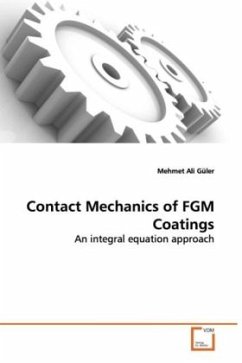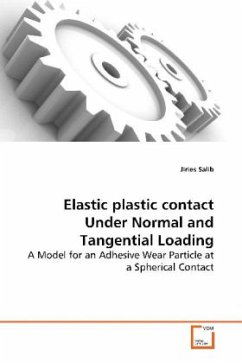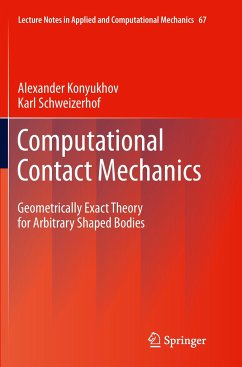
Dowel-Concrete Contact Characteristics
Analysis, Laboratory Setup, Experiments
Versandkostenfrei!
Versandfertig in 6-10 Tagen
39,99 €
inkl. MwSt.

PAYBACK Punkte
20 °P sammeln!
Dowel-jointed concrete pavements often show seriouscracks long before their design life expires. Themost common forms of cracks are mid-slab transversecracking and transverse joint damage. Whiledowel-concrete friction forces are the majorparameter contributing to such forms of damage,current concrete pavement design procedures are basedon the assumption that such forces do not exist. Design specification state that the steel dowelsshould be coated with bond-breaking fluid that isassumed to fully eliminate dowel-concrete frictionalforces. Lack of measured values of dowel-concretefriction coeffi...
Dowel-jointed concrete pavements often show serious
cracks long before their design life expires. The
most common forms of cracks are mid-slab transverse
cracking and transverse joint damage. While
dowel-concrete friction forces are the major
parameter contributing to such forms of damage,
current concrete pavement design procedures are based
on the assumption that such forces do not exist.
Design specification state that the steel dowels
should be coated with bond-breaking fluid that is
assumed to fully eliminate dowel-concrete frictional
forces. Lack of measured values of dowel-concrete
friction coefficient hinders accounting for
dowel-concrete axial forces in the design of dowel
jointed concrete pavements. In this book, the
dowel-pulling force and the dowel-concrete
coefficient of friction were measured using a novel
laboratory setup of vibrating wire strain gauges
embedded in both the dowel and concrete. Theoretical
model is developed to enable calculation of the
dowel-concrete friction coefficient. A 3D finite
element analysis is used to estimate the stress field
in the concrete surrounding dowel bars. Results
indicate that coefficient of friction is higher in
uncoated bars.
cracks long before their design life expires. The
most common forms of cracks are mid-slab transverse
cracking and transverse joint damage. While
dowel-concrete friction forces are the major
parameter contributing to such forms of damage,
current concrete pavement design procedures are based
on the assumption that such forces do not exist.
Design specification state that the steel dowels
should be coated with bond-breaking fluid that is
assumed to fully eliminate dowel-concrete frictional
forces. Lack of measured values of dowel-concrete
friction coefficient hinders accounting for
dowel-concrete axial forces in the design of dowel
jointed concrete pavements. In this book, the
dowel-pulling force and the dowel-concrete
coefficient of friction were measured using a novel
laboratory setup of vibrating wire strain gauges
embedded in both the dowel and concrete. Theoretical
model is developed to enable calculation of the
dowel-concrete friction coefficient. A 3D finite
element analysis is used to estimate the stress field
in the concrete surrounding dowel bars. Results
indicate that coefficient of friction is higher in
uncoated bars.












